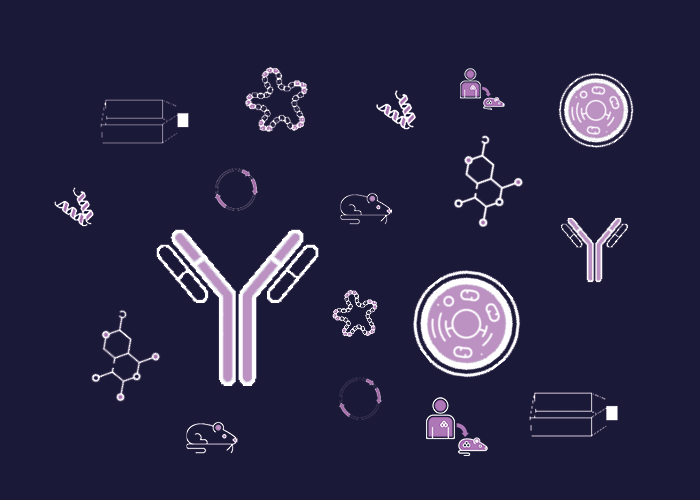Cat. #153297
Anti-p53 [PAb242]
Cat. #: 153297
Sub-type: Primary antibody
Unit size: 100 ug
Availability: 3-4 weeks
Target: p53
Class: Monoclonal
Application: ELISA ; IHC ; IF ; IP ; WB
Reactivity: Mouse
Host: Mouse
£300.00
This fee is applicable only for non-profit organisations. If you are a for-profit organisation or a researcher working on commercially-sponsored academic research, you will need to contact our licensing team for a commercial use license.
Contributor
Inventor: David Lane
Institute: Cancer Research UK, London Research Institute: Clare Hall Laboratories
Primary Citation: Yewdell et al. 1986. J Virol. 59(2):444-52. PMID: 2426467.
Tool Details
*FOR RESEARCH USE ONLY (for other uses, please contact the licensing team)
- Name: Anti-p53 [PAb242]
- Alternate name: Antigen NY-CO-13, BCC7, Cellular tumor antigen p53, FLJ92943, LFS1, Mutant tumor protein 53, p53, p53 tumor suppressor, P53_HUMAN, Phosphoprotein p53, Tp53, Transformation related protein 53, TRP53, Tumor protein 53, Tumor protein p53, Tumor suppressor p53
- Cancer: Other
- Cancers detailed: Broadly Applicable
- Research fields: Apoptosis and autophagy;Cancer;Cell biology;Genetics
- Clone: PAb 242
- Tool sub type: Primary antibody
- Class: Monoclonal
- Conjugation: Unconjugated
- Molecular weight: 53 kDa
- Strain: Balb/c
- Reactivity: Mouse
- Host: Mouse
- Application: ELISA ; IHC ; IF ; IP ; WB
- Description: Monoclonal antibody directed against p53, binding a distinct epitope in amino acids 18-27 at the N-terminus
- Immunogen: SV40-transformed cell line BALB/c SVA31 E7
- Immunogen uniprot id: P04637
- Isotype: IgG1
- Myeloma used: Sp2/0-Ag14
- Recommended controls: MEFs
Target Details
- Target: p53
- Molecular weight: 53 kDa
- Tissue cell line specificity: MEFs
- Target background: Anti-p53 binds p53 protein, a crucial tumour suppressor protein, implicated in over 50% of cancers. p53 is a stress-regulated transcription factor that regulates cell cycle arrest and was first identified as an SV40 large T antigen-binding protein. p53 is involved in many mechanisms of anti-cancer function and plays a role in apoptosis, genomic stability, cell cycle regulation, and inhibition of angiogenesis. p53 is known as the guardian of the genome as it functions to prevent gene mutation....
Applications
- Application: ELISA ; IHC ; IF ; IP ; WB
Handling
- Format: Liquid
- Concentration: 1 mg/ml
- Unit size: 100 ug
- Storage buffer: PBS with 0.02% azide
- Storage conditions: Store at -20° C frozen. Avoid repeated freeze / thaw cycles
- Shipping conditions: Dry ice
References
- Sabapathy et al. 2019. J Mol Cell Biol. 11(4):317-329. PMID: 30907951.
- Eng et al. 2016. Protein Eng Des Sel. 29(1):11-21. PMID: 26508747.
- Mayelzadeh et al. 2007. Oncogene. 26(21):2955-63. PMID: 17130840.
- Lane et al. 1996. Oncogene. 12(11):2461-6. PMID: 8649788.
- Yewdell et al. 1986. J Virol. 59(2):444-52. PMID: 2426467.

![Anti-p53 [PAb242]](https://cancertools.org/wp-content/uploads/15329720765x500.png)




